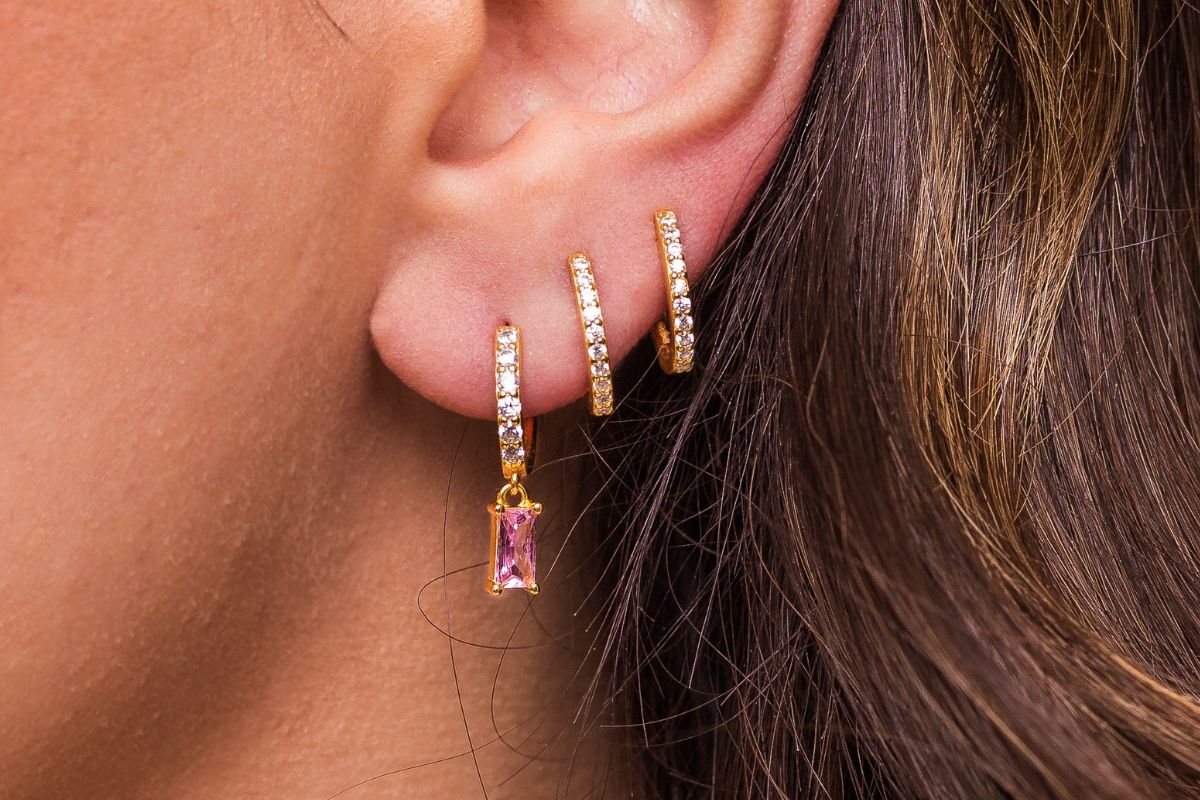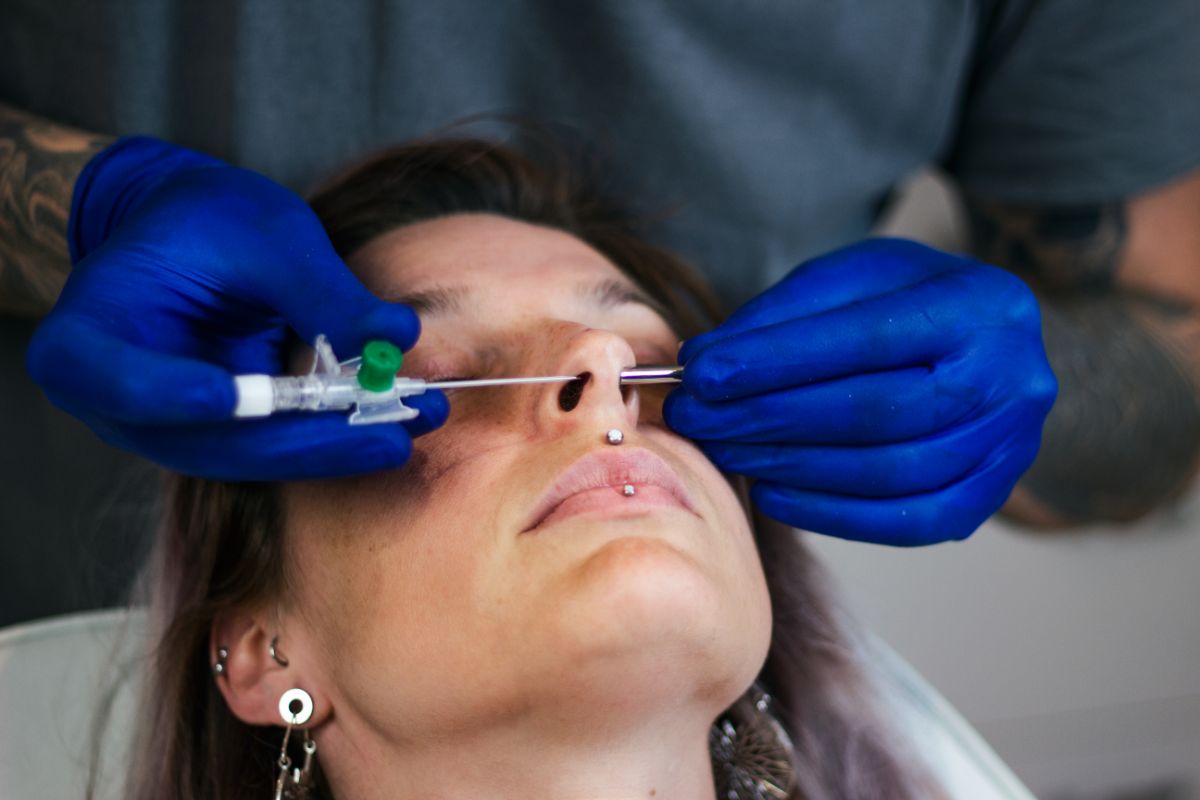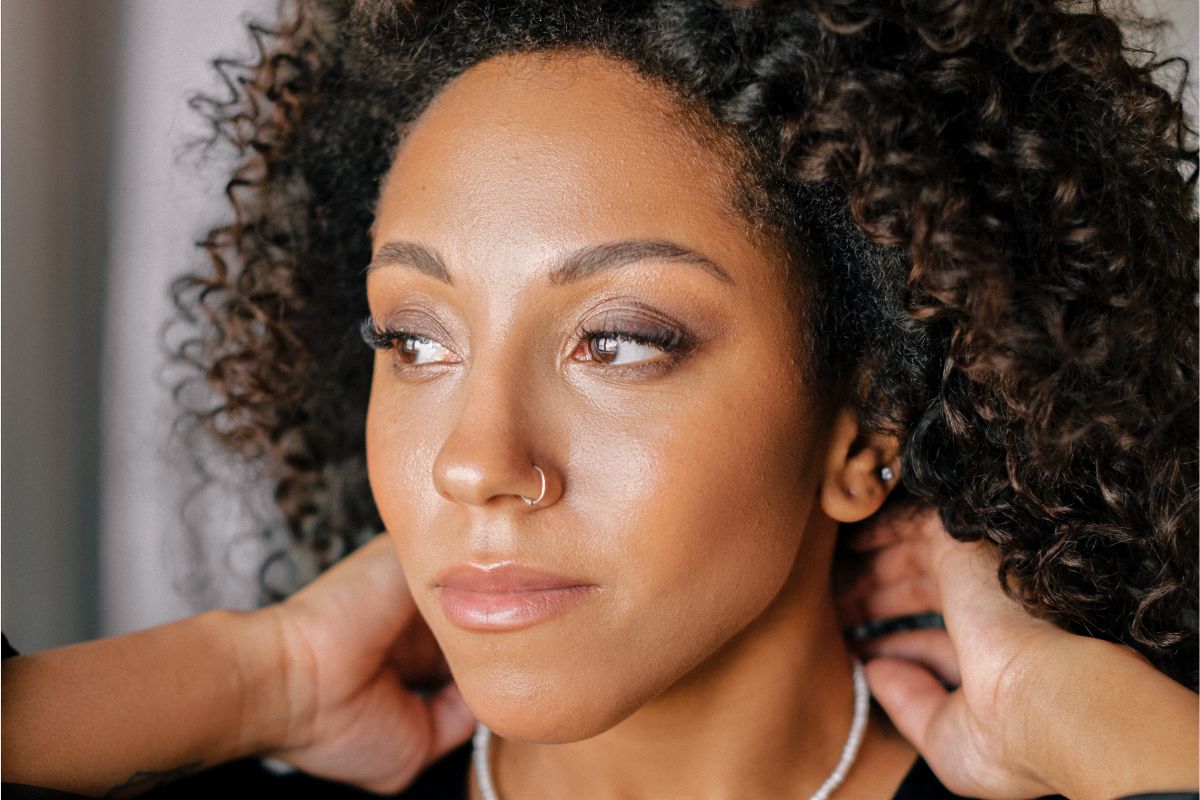Lobe piercings are one of the most popular body modifications among men and women. In fact, it tends to be the most universally accepted piercing.
Since ear lobe piercings are so popular, many people forget that care must still be taken after the procedure. The lobe is generally an easy area to heal, therefore, some people get lazy.
Whether you’re getting a new piercing or this is your very first lobe piercing, then it is a good idea to understand everything you need to know about lobe healing.
With this in mind, this guide will explore everything you need about lobe piercings and how long they take to heal.
Let’s get straight into it.
Lobe Piercing Healing Process
When you maintain self-care during your new piercing aftercare, the healing process is fairly straightforward.
Throughout the entire healing process, you must conduct saline cleanses. You should keep in mind that the outside of your lobe piercing will heal before the inside does.
As such, it will look healed before it actually is – this is why saline cleanses are important during the entire healing process.
If you suspect your piercing to have healed, then it’s best to talk to your piercer before stopping your aftercare or changing your earrings.
One thing you should never do is rotate your jewelry. This is something that you may have been told as a child – to rotate your earrings once or twice a day – however, this should be avoided at all costs.
In fact, it is known to cause more harm than good – adding trauma to the healing process. Therefore, you should always avoid touching your piercings.
If you have to touch your piercing, make sure you wash your hands before so, using antibacterial soap.
Better yet, use a saline spray solution, this will allow you to clean your jewelry without having to touch it.
Moreover, if you notice crust developing around your earlobe piercing, simply take a cotton swab with some saline solution and gently pat away the crusties until they have dissolved away.
How Long Does An Earlobe Piercing Take To Heal?
For a few weeks, a new body piercing may be tender and red. Depending on which body part you pierce, the healing process will vary. Plus, how well you look after your new piercing, too.
Below, we have outlined the general healing periods of the most common piercings. These include:
- Ear lobe – 6 to 8 weeks.
- Belly button – 6 months to 1 year.
- Top of the ear – 6 to 8 weeks.
- Tongue – 2 to 4 weeks.
- Nose – Up to 6 months.
How To Take Care Of A Healing Ear Piercing?

Below we have listed all the steps you should take during the initial stages of healing your lobe piercing (6-8 weeks).
Wash Your Piercing Everyday
Before doing anything, you want to thoroughly wash your hands with soap and water before touching your piercing or ear as you don’t want to potentially infect the area.
Throughout the entire 6-8 week healing process, you should wash your piercing area once a day using a gentle antibacterial soap and warm water.
Once finished, pat the area until it has dried – using either a paper towel or clean tissue.
Avoid Bacteria
In addition to your daily soap and water cleaning, you’ll want to ensure you’re cleaning the area further during the first 6 to 12 weeks with an antibacterial solution to avoid any bad bacteria.
In fact, you can even use a cotton swab dipped in small amounts of rubbing alcohol to clean your piercing.
That said, it is important to note that alcohol can be particularly harsh – especially for those with sensitive skin.
While alcohol is great at temporarily killing surface-level germs, it can be extremely drying when used repetitively – causing irritation and potentially delaying the healing process.
Instead, you can simply opt for a saline solution, such as the Arm & Hammer Simply Saline Wound Wash, or anything designed for post-piercing healing that contains benzalkonium chloride – providing you with antimicrobial protection.
Before using any new product, make sure you undertake a patch test by applying it to your inner arm and waiting 24 hours to make sure it doesn’t cause any irritation.
As previously mentioned, you should also avoid touching your new piercing at all costs, too. Here, you should clean the front and the back of your piercing around two to three times a day.
Essentially, the more you play and twist your earring, the more irritation you will create – this could lead to infections, bumps, and even keloid scars.
Apply Soothing Products
If you find that the skin surrounding your piercing is feeling itchy or dry, you can combat this by adding petroleum-based products, such as Aquaphor or Vaseline to the area – keeping it protected and moisturized at the same time.
For those suffering from particularly dry or sensitive skin that is feeling irritated, then you should consider talking to your dermatologist or primary care doctor about getting a prescription for a strong topical antibiotic – this will help to prevent infection and calm things down.
That said, you should avoid purchasing over-the-counter topical antibiotics since these can sometimes contain bacitracin which is known to sometimes cause further allergic reactions or irritation.
Final Thoughts
Getting a new piercing is always a fun adventure. It is a piece of customization that you have complete control over. That said, before you go about changing your piercing, you’ll want to ensure that it is completely healed before doing so.
Generally speaking, it takes around 6-8 weeks for a lobe piercing to completely heal – while it may look healed on the outside, this doesn’t mean it is healed on the inside.
Therefore, to ensure your pierced ear lobes are free from infection, make sure to use a saline-based solution throughout the entire healing process.





